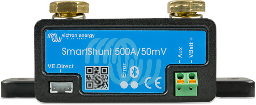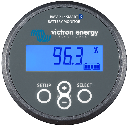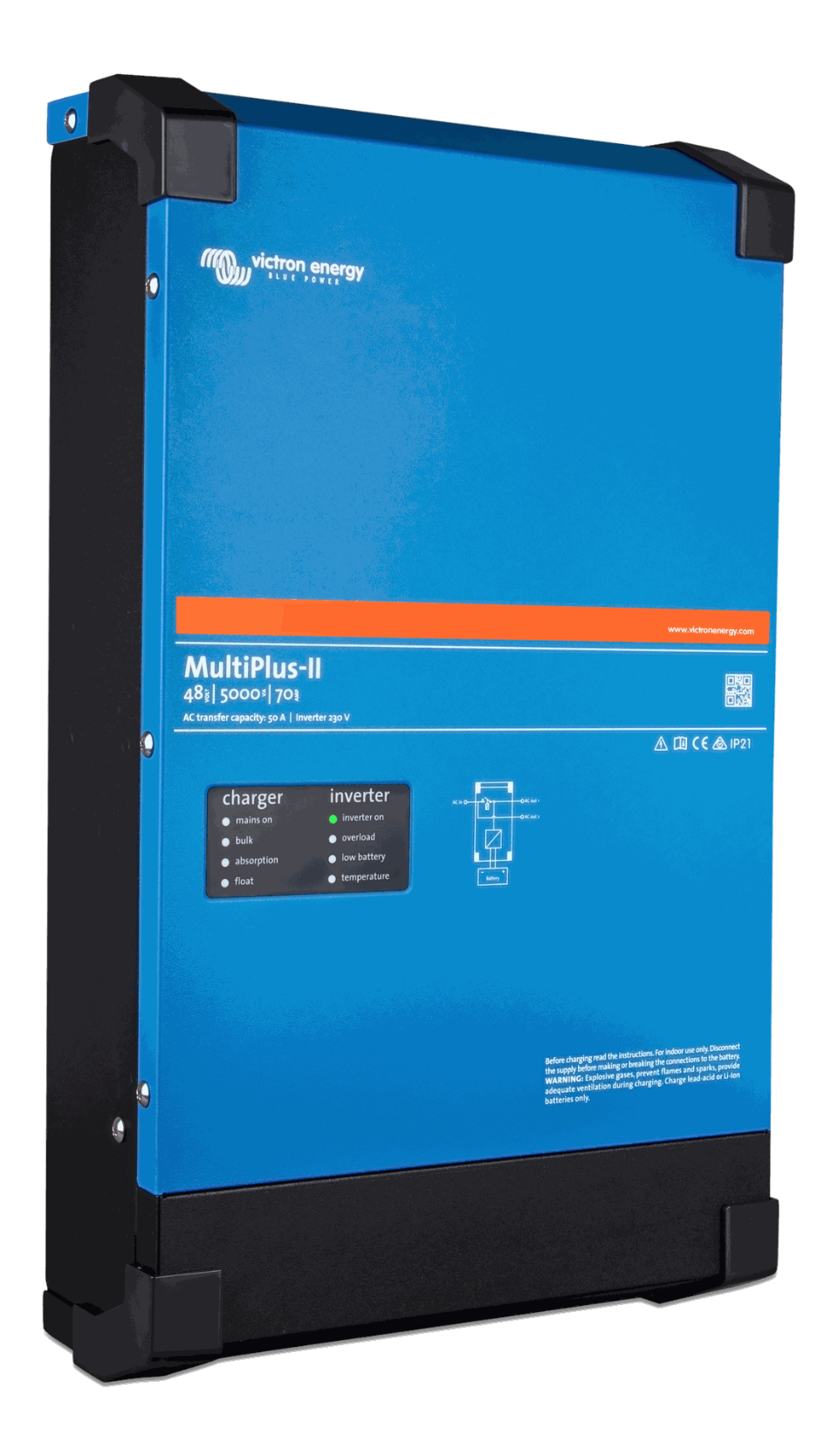All settings are for 12v systems, for 24v systems multiply voltages by 2, for 48v multiply voltages by 4. Percent values should remain the same.
Download Victron Connect & VE Configure Software
Smart Shunt / BMV 712 Battery Settings


Setting | Value | Notes |
Capacity | AH of battery Bank | Add up capacity of battery bank in ah. Note batteries in parallel, AH is cumulative, if batteries in series, AH is not cumulative. |
Charged Voltage | 14 - 14.2 volts | Must be lower than absorption voltage set in chargers. Check battery manufacturer documentation. |
Discharge Floor | 20% | Set this to how much of your battery you want to keep in reserve and not use. Alarms and other calculations in the Victron ecosystem are calculated from this value. |
Tail Current | 4% | Percent of battery capacity is used as a current measurement to determine when a battery is full. Example: 4% of 200ah is 8, so when the battery takes 8 or less amps in, the battery is full. |
Charged Detection Time | 3m | Time in minutes that the above charged detection parameters must all be met to sync the battery to 100% full charge. |
Peukert Exponent | 1.05 | This factor compensates for battery efficiency losses under high loads. Lower values mean better efficiency. Lithium batteries have a near-constant usable capacity, so their exponent is close to 1.05. Learn more with the Peukert Explainer & Calculator Post . |
Charge Efficiency Factor | 99% | The efficiency of storing energy in the battery. Lithium has a very high efficiency, while lead-acid loses more energy to heat and resistance. |
Current Threshold | 0.10A | The minimum current the SmartShunt will recognize. Any lower current may be ignored to prevent erroneous readings. |
Time-to-Go averaging period | 3 - 5 minutes | This setting determines how quickly the time-to-go estimation reacts to load changes. A lower value makes it more responsive, but may result in more fluctuation. |
Battery SOC on Reset | Keep SOC | Determines what happens if the shunt loses power. Keep SOC retains the last known state of charge (recommended). Clear resets SOC to 0%. Set to 100% assumes the battery is fully charged upon restart, which may be inaccurate. |
Alarms & Other Settings | ||
Low Voltage Alarm | 12v | Triggers an alarm when battery voltage drops below this value. Helpful to alert you to potential problems even if battery SOC has drifted or become uncalibrated. |
Monitor Mode | Battery Monitor | This can also be set to DC Energy Meter to measure an alternator or other DC source directly. |
Multiplus / Quattro Settings

Setting | Value | Notes |
Capacity | AH of battery Bank | Add up capacity of battery bank in ah. Note batteries in parallel, AH is cumulative, if batteries in series, AH is not cumulative. |
Charged Voltage | 14 - 14.2 volts | Must be lower than absorption voltage set in chargers. Check battery manufacturer documentation. |
Discharge Floor | 20% | Set this to how much of your battery you want to keep in reserve and not use. Alarms and other calculations in the Victron ecosystem are calculated from this value. |
Tail Current | 4% | Percent of battery capacity is used as a current measurement to determine when a battery is full. Example: 4% of 200ah is 8, so when the battery takes 8 or less amps in, the battery is full. |
Charged Detection Time | 3m | Time in minutes that the above charged detection parameters must all be met to sync the battery to 100% full charge. |
Peukert Exponent | 1.05 | This factor compensates for battery efficiency losses under high loads. Lower values mean better efficiency. Lithium batteries have a near-constant usable capacity, so their exponent is close to 1.05. Learn more with the Peukert Explainer & Calculator Post . |
Charge Efficiency Factor | 99% | The efficiency of storing energy in the battery. Lithium has a very high efficiency, while lead-acid loses more energy to heat and resistance. |
Current Threshold | 0.10A | The minimum current the SmartShunt will recognize. Any lower current may be ignored to prevent erroneous readings. |
Time-to-Go averaging period | 3 - 5 minutes | This setting determines how quickly the time-to-go estimation reacts to load changes. A lower value makes it more responsive, but may result in more fluctuation. |
Battery SOC on Reset | Keep SOC | Determines what happens if the shunt loses power. Keep SOC retains the last known state of charge (recommended). Clear resets SOC to 0%. Set to 100% assumes the battery is fully charged upon restart, which may be inaccurate. |
Alarms & Other Settings | ||
Low Voltage Alarm | 12v | Triggers an alarm when battery voltage drops below this value. Helpful to alert you to potential problems even if battery SOC has drifted or become uncalibrated. |
Monitor Mode | Battery Monitor | This can also be set to DC Energy Meter to measure an alternator or other DC source directly. |
Victron Equipment & Battery Settings For Lithium LiFePo4 Batteries